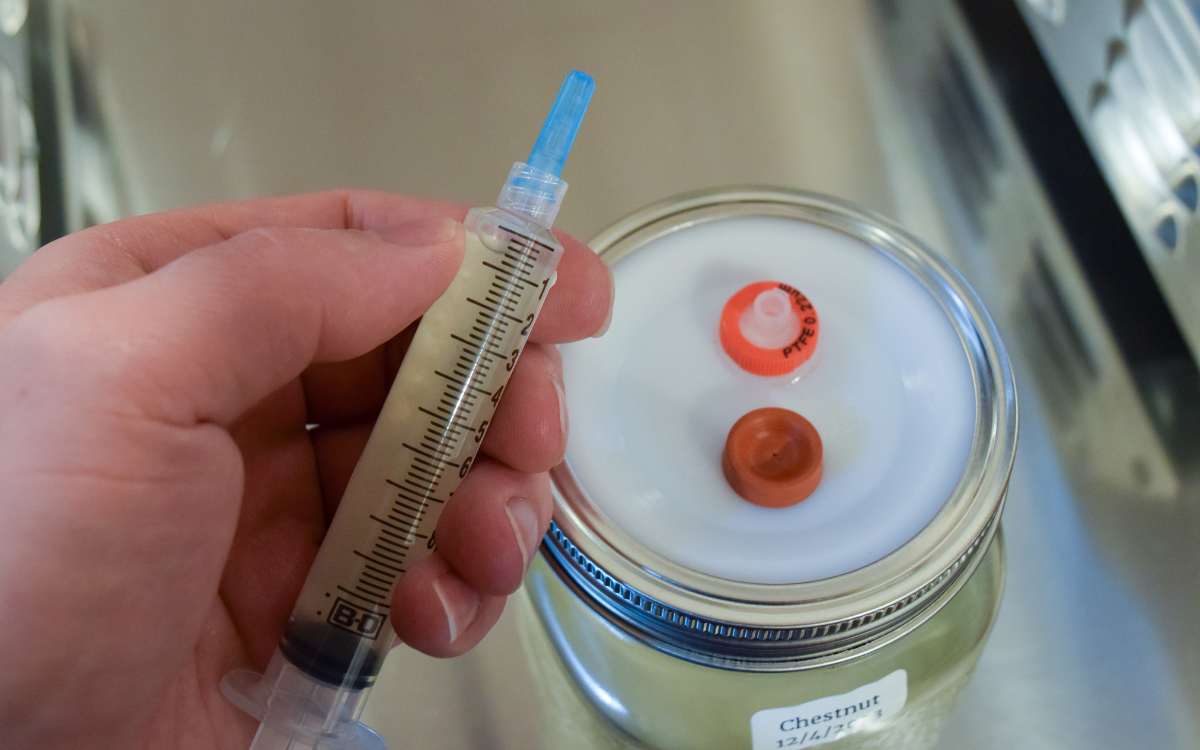Unlocking Mycelial Potential: The Advantages of Mushroom Spore Liquid
Mushroom cultivation, a fascinating blend of science and nature, has seen continuous innovation over the years. While traditional methods like spore prints and agar cultures remain popular, the advent of mushroom spore liquid has introduced a highly efficient and versatile tool for cultivators. Far from being just simple water with spores, a properly prepared spore liquid offers a distinct set of advantages that can significantly streamline and improve the cultivation process.
What is Mushroom Spore Liquid?
At its core, mushroom spore liquid is a sterile suspension of mushroom spores in pure, sterile water. It is typically contained within a sealed syringe, allowing for precise and aseptic application. Unlike a “liquid culture,” which contains actively growing mycelium (the fungal root network), spore liquid primarily serves as a starting point, providing individual spores ready to germinate when introduced to a suitable environment.
Here are the key advantages of utilizing mushroom spore liquid in your cultivation journey:
- Accelerated Germination and Colonization
Perhaps the most significant advantage of spore liquid is its ability to jumpstart the fungal life cycle. Spores in a liquid environment are already hydrated, a crucial first step for germination. When introduced to a nutrient-rich substrate, these pre-hydrated spores can begin germinating almost immediately, leading to:
Faster Mycelial Growth: Reduced lag time means the mycelium establishes itself more quickly, shortening the overall cultivation cycle.
Vigorous Colonization: A rapid start can lead to a more robust and widespread colonization of the substrate.
- Uniform Inoculation
The liquid format allows for highly even distribution of spores across the substrate. Whether you’re inoculating grains, agar plates, or even bulk substrates directly, the syringe allows for:
Even Spore Distribution: The liquid carries spores into crevices and across surfaces more effectively than dry spores, ensuring a consistent and widespread presence.
Reduced “Dead Spots”: This uniformity minimizes areas where spores might be too sparse to initiate strong growth, leading to more complete substrate colonization.
- Enhanced Contamination Control (When Prepared Correctly)
While the initial preparation of spore liquid requires strict aseptic technique, once sealed in a sterile syringe, it offers a relatively contained and protected environment for the spores:
Reduced Airborne Contaminants: Unlike open spore prints or even agar work, a sealed syringe greatly minimizes exposure to airborne molds and bacteria during storage and initial inoculation.
Precision Application: The ability to inject the liquid directly into the substrate or through self-healing injection ports reduces the risk of introducing external contaminants during the inoculation process itself.
- Ease of Use and Precision
Spore liquid simplifies the inoculation process, making it accessible even for beginners:
Ready-to-Use Format: No more scraping spores from a print or rehydrating them. The liquid is ready for immediate injection.
Accurate Dosing: Syringes allow for precise measurement and application, ensuring you use just enough inoculum without waste.
Clean and Less Messy: Compared to handling dry spores, liquid inoculation is a much cleaner process, minimizing spore dispersal in your workspace.
- Efficiency and Scalability
For cultivators looking to expand their operations, spore liquid offers significant efficiencies:
Maximized Yield from Spores: A single spore print can be stretched to create multiple spore liquid syringes, effectively inoculating a larger volume of substrate.
Bulk Inoculation: Spore liquid is ideal for inoculating large batches of grain jars or bags, making it suitable for more extensive cultivation projects.
Important Considerations: Spore Liquid vs. Liquid Culture
It’s crucial to distinguish mushroom spore liquid from a “liquid culture.”
Spore Liquid: Contains only spores suspended in sterile water, waiting to germinate.
Liquid Culture: Contains actively growing mycelium suspended in a nutrient-rich solution.
While spore liquid provides the initial advantage of pre-hydration, it still requires the spores to germinate. A true liquid culture with active mycelium will offer even faster colonization times, but it also carries a higher risk of hidden contamination if not prepared and monitored meticulously. Many cultivators will use spore liquid to inoculate agar or grain, and then use a small piece of clean, active mycelium from those to create a liquid culture.
Conclusion
Mushroom spore liquid has emerged as an invaluable tool for modern mushroom cultivators. By offering accelerated germination, uniform inoculation, improved contamination control, ease of use, and enhanced efficiency, it significantly streamlines the cultivation process from the very first step. While proper sterile technique remains paramount, embracing the advantages of spore liquid can lead to more consistent, vigorous, and ultimately more successful mushroom harvests.
